This post may contain affiliate links. See my disclosure policy.
A Mirepoix is an essential flavor base made from humble vegetables such as onions, celery, and carrots. Fundamental to many classic soups, stew, and meat dishes find out how to make your own mirepoix recipe, how to use, and quickly take your cooking to the next level!
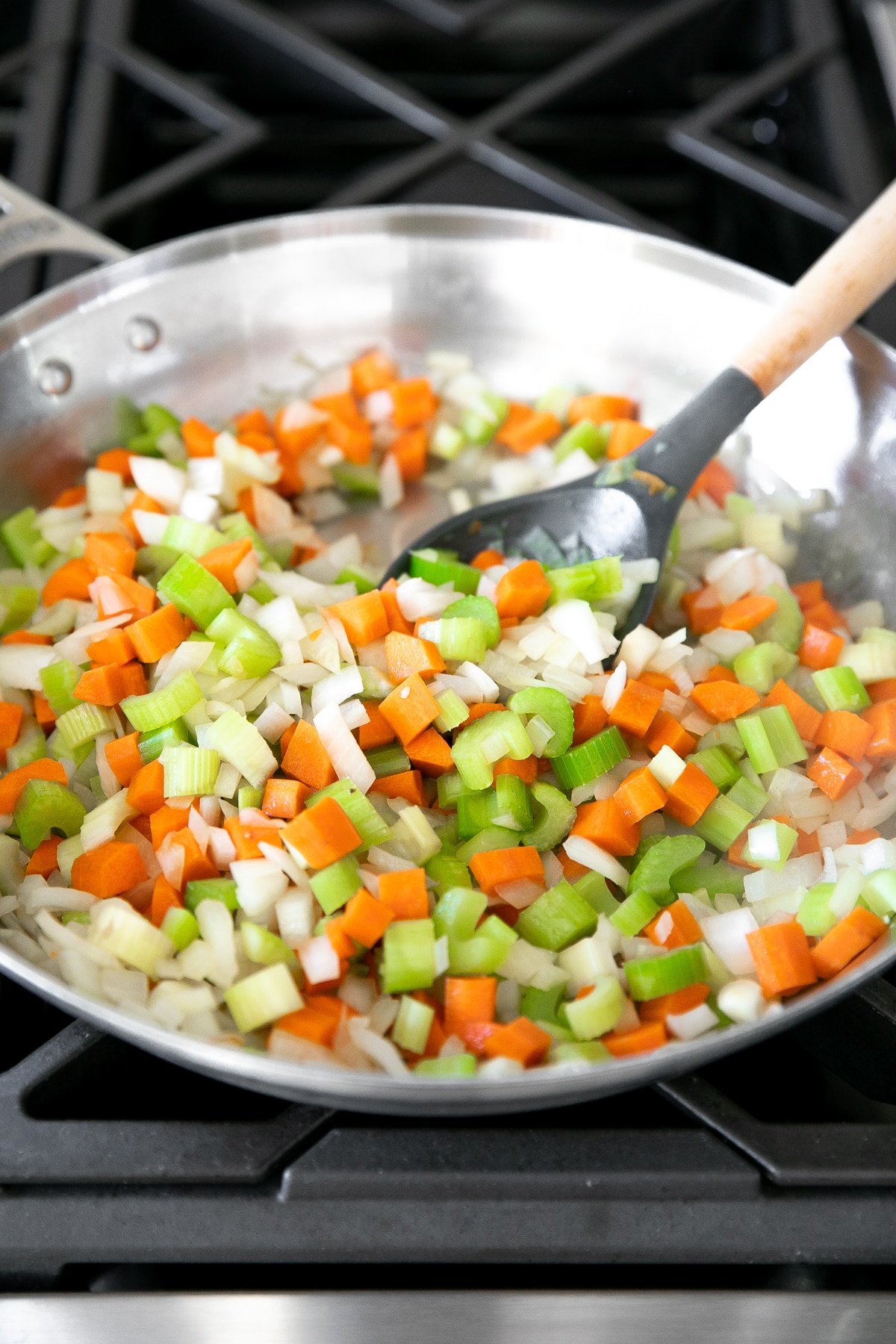
Mirepoix
The words base, foundation, and humble beginnings are all terms used to describe mirepoix. Pronounced meer-PWAH, this simple, yet essential flavor base was named in the 18th-century after the duke, Charles Pierre Gaston François de Lévis, or Duc de Mirepoix, a French general and diplomat. It is said that his chef de cuisine named this seasoning base after his patron- the Duke.
Considered key to many amazing recipes, mirepoix is found in many of my own personal favorites including this Chicken Noodle Soup, Chicken Cacciatore, and Potato Soup.
So now that you know how important mirepoix is to cooking, let’s chat a little more about what it is, how to make your own, and mirepoix variations.
Table of Contents
- Mirepoix
- What is Mirepoix?
- What are the aromatics in cooking?
- How to make mirepoix
- What do you cook first, mirepoix or meat?
- What size should I chop my mirepoix vegetables?
- Can you freeze mirepoix?
- What is the difference between mirepoix and the Holy Trinity?
- What is the difference between mirepoix and Soffritto
- Additional Mirepoix Variations
- You may also love these recipes,
- Mirepoix Recipe
What is Mirepoix?
Mirepoix is a mix of aromatics, made from finely diced vegetables (the mix of vegetables will often vary by country and cuisine) that are cooked in butter or oil, low and slow as to sweeten the ingredients rather than caramelize them. These slow-cooked aromatic vegetables form the first layer of flavor to many recipes.
While a mirepoix may seem insignificant (or even pointless) it is one of the most essential steps in adding flavor to stews, soups, stocks, curries, stir-frys, etc.
The aromatics in mirepoix include onions, carrots, and celery, with a traditional ratio being 2:1:1, or two parts onion, one part carrot, and one part celery.
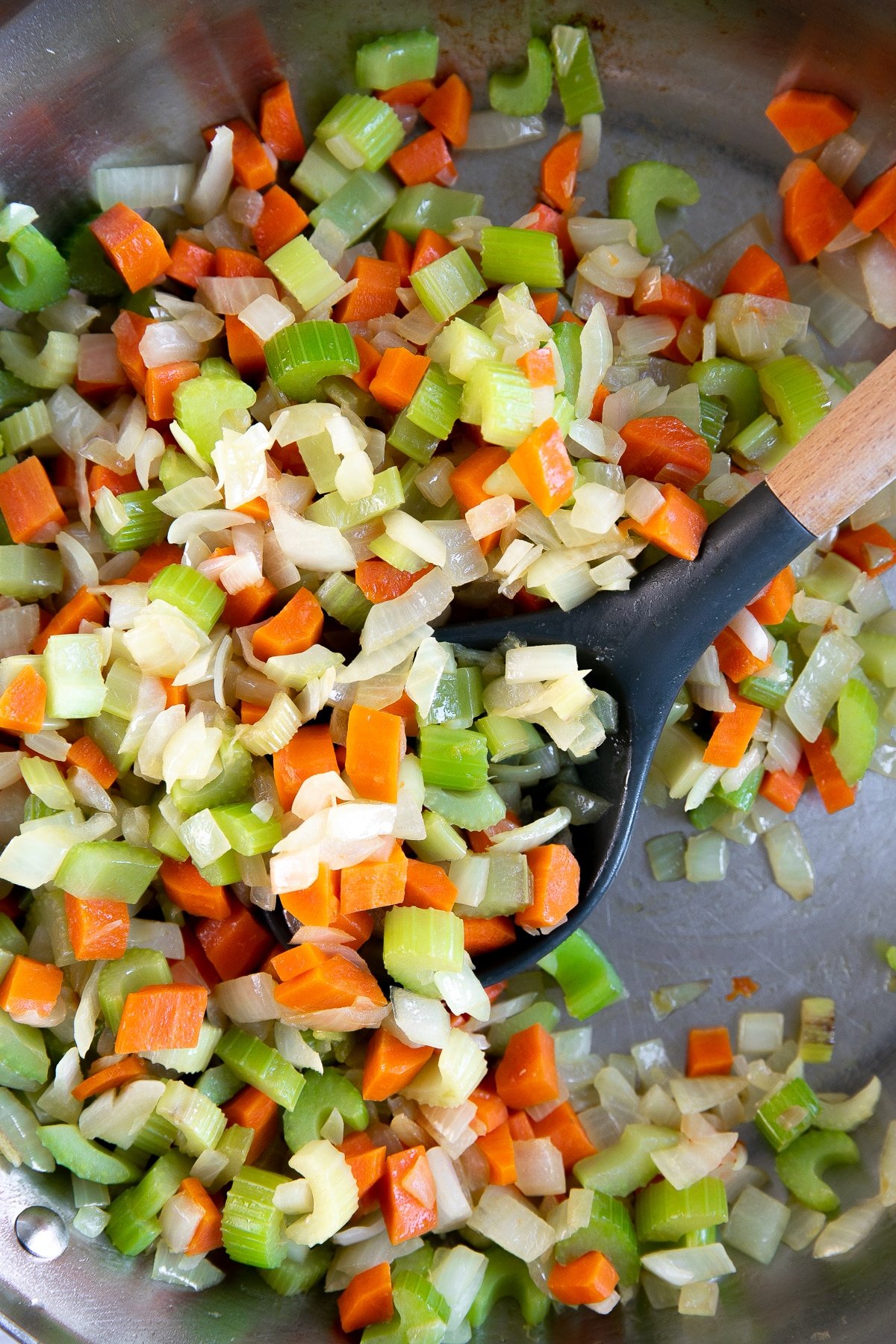
What are the aromatics in cooking?
Aromatics are a combination of vegetables, herbs, and (sometimes) meats that are heated in some fat (butter, oil, ghee, etc) at the beginning of cooking. The list of aromatics is long and varies depending on the dish being cooked. However, the most commonly used aromatics include – onions, celery, carrots, ginger, and garlic.
Classic aromatic combinations:
- Mirepoix (French): onion + carrot + celery with butter
- Cajun Holy Trinity: onion + celery + green bell pepper with olive oil or butter
- Soffritto (Italian): onions + carrots + celery with olive oil (often contains parsley)
- Sofrito (Latin): onions + garlic + bell peppers + tomatoes with olive oil
- Chinese: garlic + scallions + ginger with cooking oil
- Indian: onion + garlic + chilies + ginger with ghee
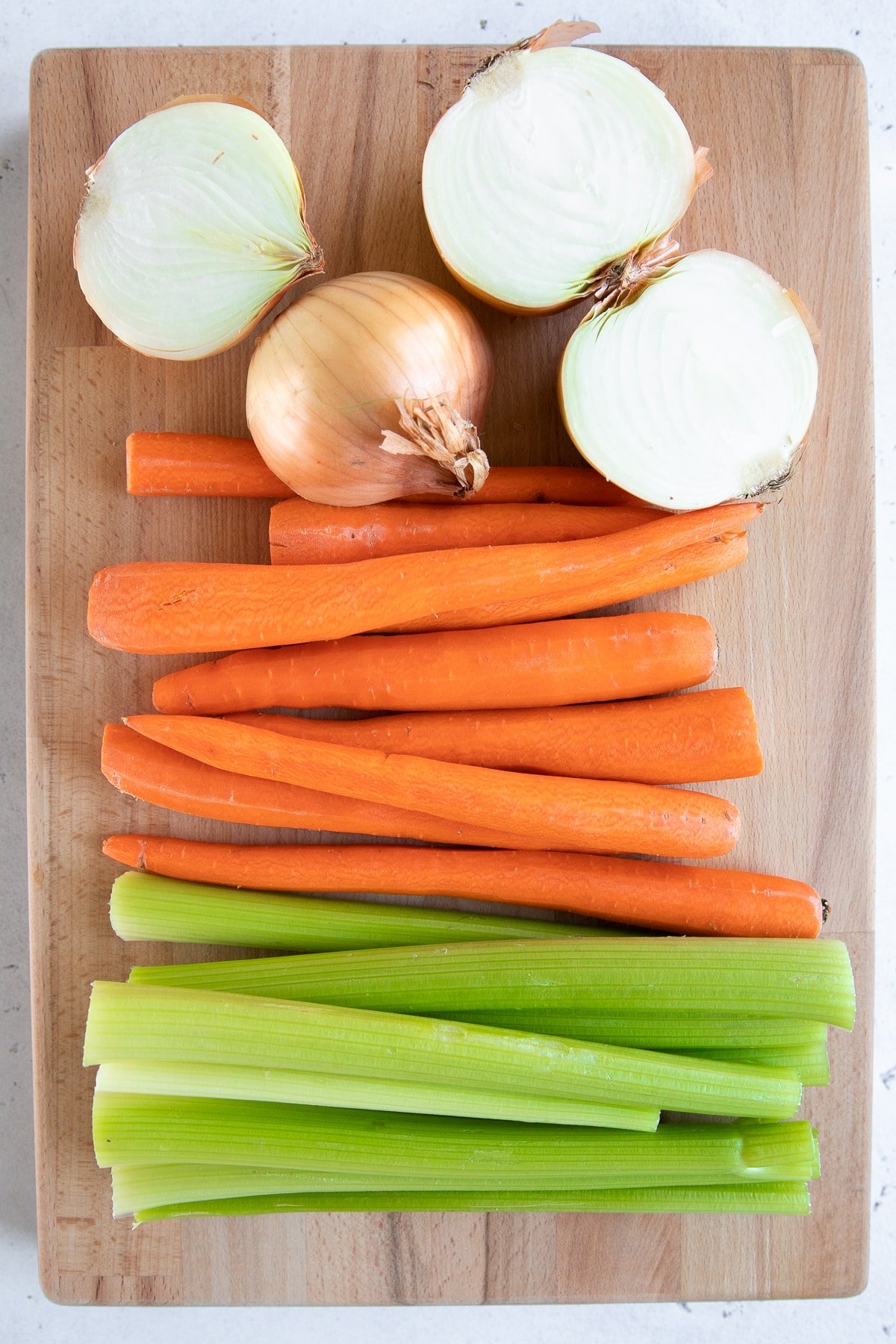
How to make mirepoix
To make this mirepoix recipe you’ll need two parts onion, one part carrot, and one part celery plus olive oil.
- Prepare your vegetables. Trim the root ends and tips from the vegetables. Rinse and scrub the carrots and celery. Dry well. If desired, peel your carrots before chopping (tip- save your root ends and carrot peelings and stick them in a freezer-safe bag. Transfer to the freezer and save for homemade vegetable stock).
- Chop your vegetables. The size you choose to chop your onions, carrots, and celery will vary depending on the recipe being prepared. However, as a general guideline: for sauteed recipes, chop small (¼-inch to ½-inch), for soups and stews, medium size (½-inch to 1-inch), and for stock, broth, or blended soups, larger size (1-2 inches).
- Cook vegetables over medium-low heat. Add the olive oil to a large skillet set over medium-low heat. Add the onions, carrots, and celery, mixing well to coat. Cook, stirring often, for 10-12 minutes, or until softened and onions are translucent. Adjust heat to prevent vegetables from browning.
Recipes with mirepoix:
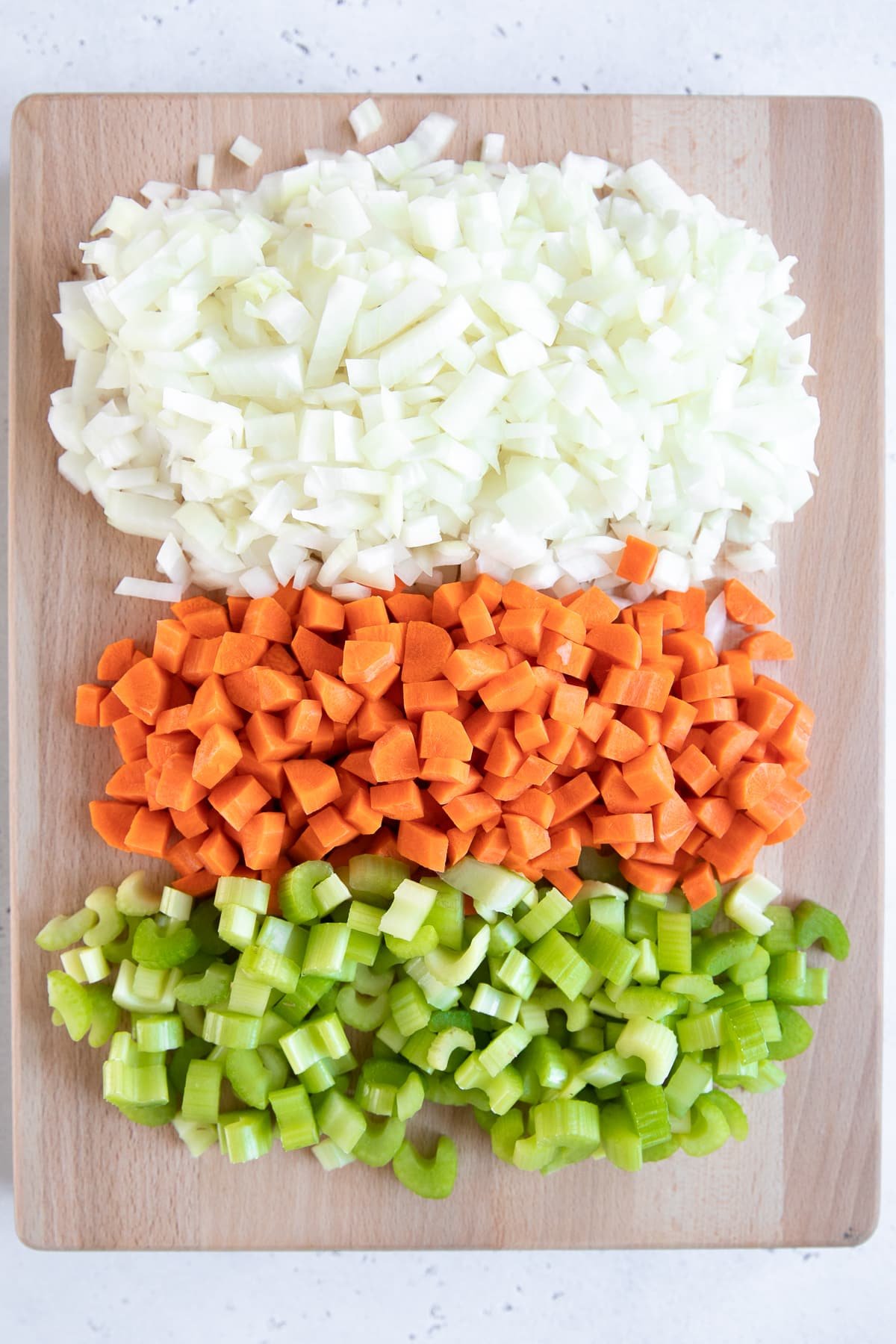
What do you cook first, mirepoix or meat?
Proper cooking order can be super confusing. What comes first, the meat or the mirepoix? Should I cook the mirepoix and meat separately or together? Unfortunately, there’s no hard and fast rule to answer either of these questions, however, it is customary to sear the meat first, remove from the skillet to a clean plate, and use the fat from the meat to cook the onions, carrots, and celery.
Searing the meat first is especially important in stew, roasts, or curries that include beef, pork, or chicken thighs as it creates extra flavor.
Recipes where you sear the meat first:
What size should I chop my mirepoix vegetables?
The overall size and shape of your vegetables will vary depending on the recipe being cooked. Most often, however, mirepoix vegetables are finely chopped.
As a general guideline:
- For sauteed recipes- small (¼-inch to ½-inch)
- For soups and stews- medium size (½-inch to 1-inch)
- For stock, broth, or blended soups- large (1-2 inches)
Regardless of the size, it’s important to chop everything approximately the same size so that your vegetables cook evenly.
Can you freeze mirepoix?
Can you prepare a large batch of mirepoix ahead of time and freeze it? Yes, absolutely.
However, onions and celery do not freeze well. Once thawed they are mushy and somewhat unappealing. For best results, I recommend using leftover thawed mirepoix in recipes that call for blending such as Easy Acorn Squash Soup or Butternut Squash Soup.
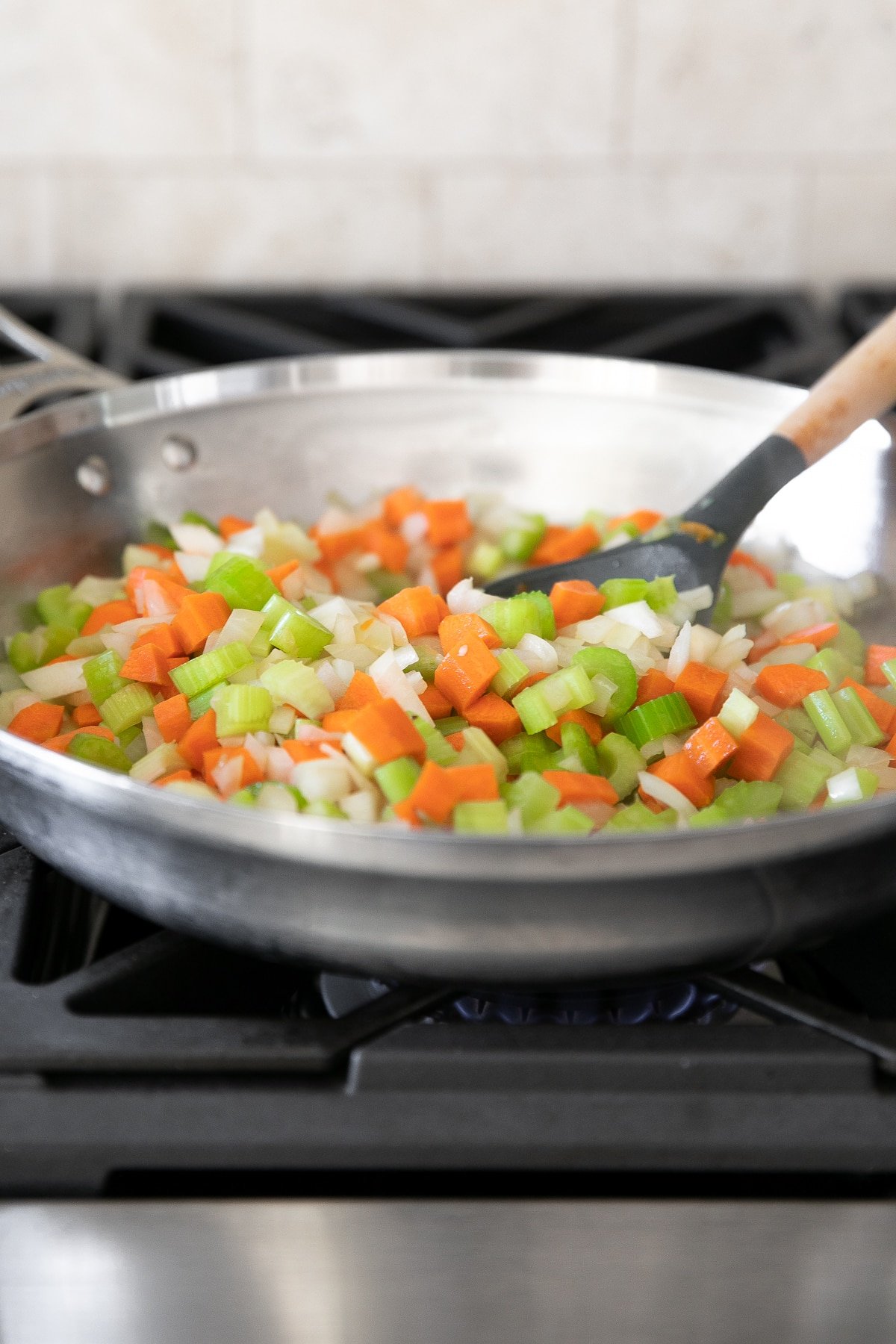
What is the difference between mirepoix and the Holy Trinity?
The backbone of Cajun and Creole cooking, the Cajun Holy Trinity is a variant of the French mirepoix. Unlike mirepoix, the Holy Trinity is made with equal parts onion, celery, and green bell pepper. Variations may include aromatics such as garlic, parsley, or shallots.
Recipes with the holy trinity:
What is the difference between mirepoix and Soffritto
The Italian version of mirepoix, soffritto starts with the same foundation of finely chopped onions, carrots, and celery. Uncooked, this combination is called the “battuto”. Slowly cooked in olive oil, the battuto then becomes soffritto.
The primary difference between mirepoix and Italian soffritto is that soffritto is cooked in olive oil, not butter and that it consists of minced vegetables rather than diced. Additionally, soffritto often includes additional ingredients such as garlic, parsley, fennel, and cured meat like pancetta or prosciutto.
Recipes with battuto or soffrito:
- Pasta with Chickpeas Recipe (Pasta e Ceci)
- Easy Minestrone Soup Recipe (Stovetop + Slow Cooker)
- Ham and Bean Soup Recipe (Crock Pot)
- Italian Wedding Soup

Additional Mirepoix Variations
Aside from Cajun Holy Trinity and Italian Soffritto, here are a few other variations popular throughout the world.
- Spanish Sofrito: Sofrito, meaning “gently fried”, is a mixture of onions, garlic, tomatoes, and (often) peppers or herbs cooked in olive oil. This flavorful tomato-based sauce is common in many recipes including paella, stew, and pasta. There are several other versions of Sofrito, including recipes from all over Latin America and Portugal.
- German Suppengrün: Suppengrün, meaning “soup greens” in German, this version of mirepoix includes leeks, carrots, and celery root (celeriac). Variations may include parsley, thyme, or other root vegetables like onions and rutabaga. In general, with Germany having a cold winter climate, the vegetables used are cold-climate roots and bulbs with longer shelf lives.
- French Pinçage: Very similar to traditional mirepoix, this variation comes with added tomato paste.
- Polish Włoszczyzna: Włoszczyzna, meaning “Italian stuff” in Polish, consists of carrots, parsnips or parsley root, celery root or celeriac, leeks, savoy or white cabbage leaves, and sometimes celery leaves and flat-leaf parsley. Traditionally, Włoszczyzna is uniformly chopped pieces celery root, parsley root, carrots, and leeks and is boiled.
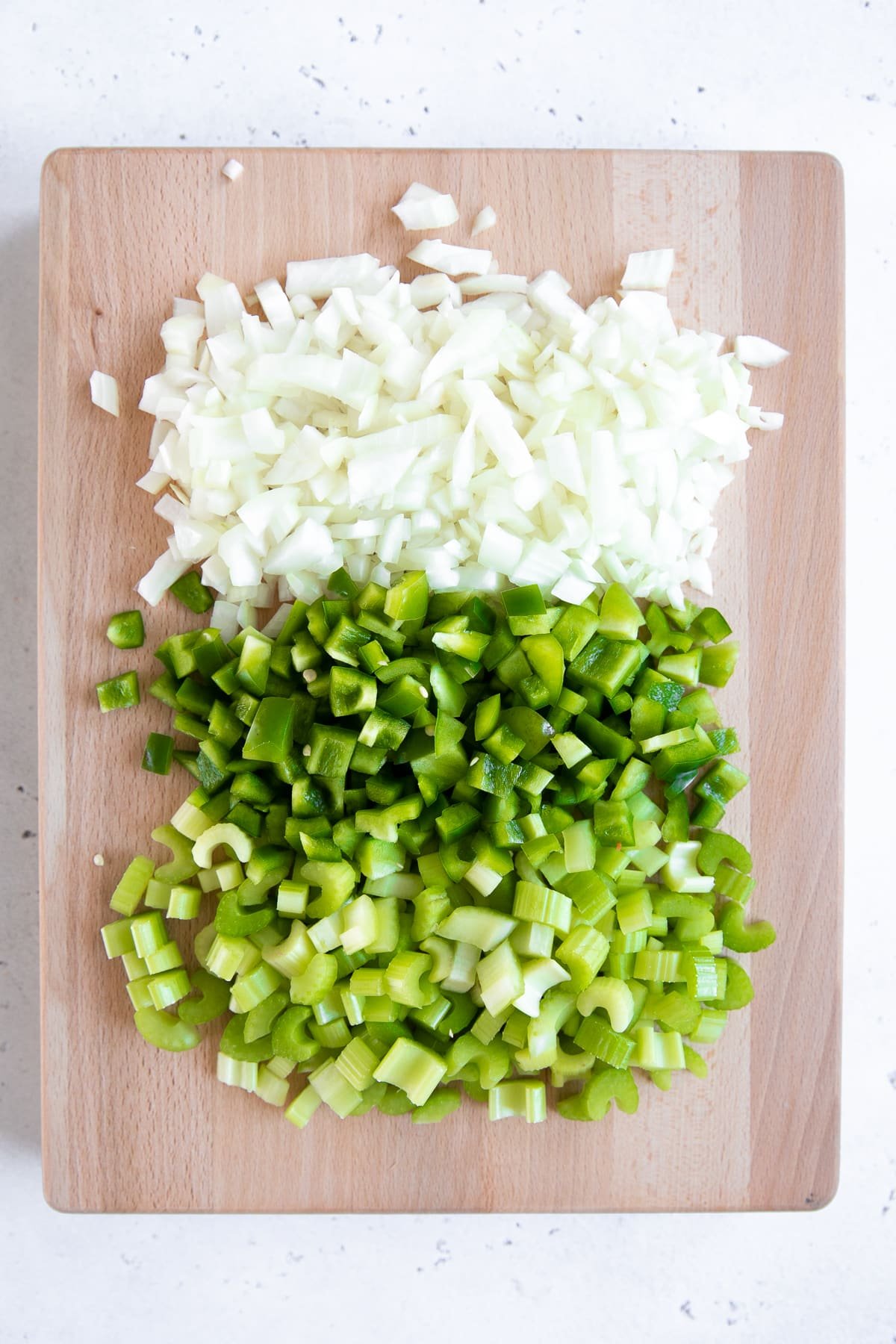
You may also love these recipes,
- Thai Basil Chicken Recipe (Pad Kra Pao Gai)
- Italian Ratatouille Recipe (Ciambotta)
- Taco Soup Recipe
- Baked Ziti Recipe
- Marinara Sauce Recipe
If you try making Mirepoix Recipe, please leave me a comment and let me know! I always love to hear your thoughts.
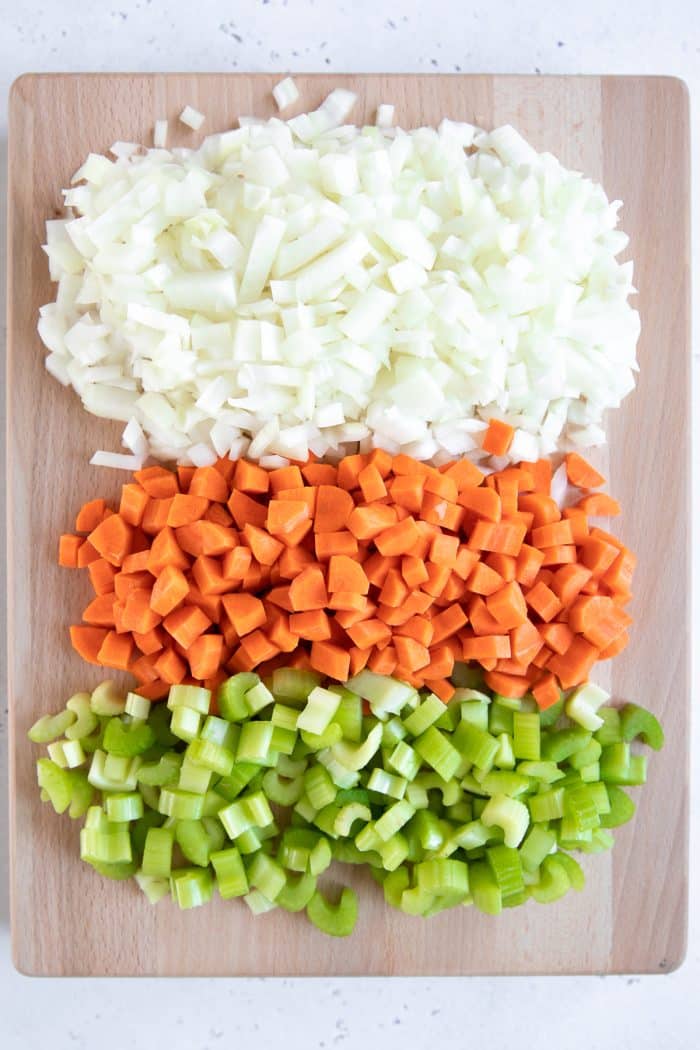
Mirepoix Recipe
Ingredients
- 3 cups onions, chopped
- 2 cups celery, chopped
- 2 cups carrots, chopped
- 1 tablespoon olive oil
Instructions
- Prepare your vegetables. Trim the root ends and tips from the vegetables. Rinse and scrub the carrots and celery. Dry well. If desired, peel your carrots before chopping.
- Chop your vegetables. The size you choose to chop your onions, carrots, and celery will vary depending on the recipe being prepared. However, as a general guideline: for sauteed recipes, chop small (¼-inch to ½-inch), for soups and stews, medium size (½-inch to 1-inch), and for stock, broth, or blended soups, larger size (1-2 inches).
- Cook vegetables over medium-low heat. Add the olive oil to a large skillet set over medium-low heat. Add the onions, carrots, and celery, mixing well to coat. Cook, stirring often, for 10-12 minutes, or until softened and onions are translucent. Adjust heat to prevent vegetables from browning (see notes).
Notes
- Cooking mirepoix is low and slow. We’re not sauteing and browning. Instead, we’re “sweating” the vegetables which sweetens rather than caramelizes them.
Nutrition
Nutrition information is automatically calculated, so should only be used as an approximation.
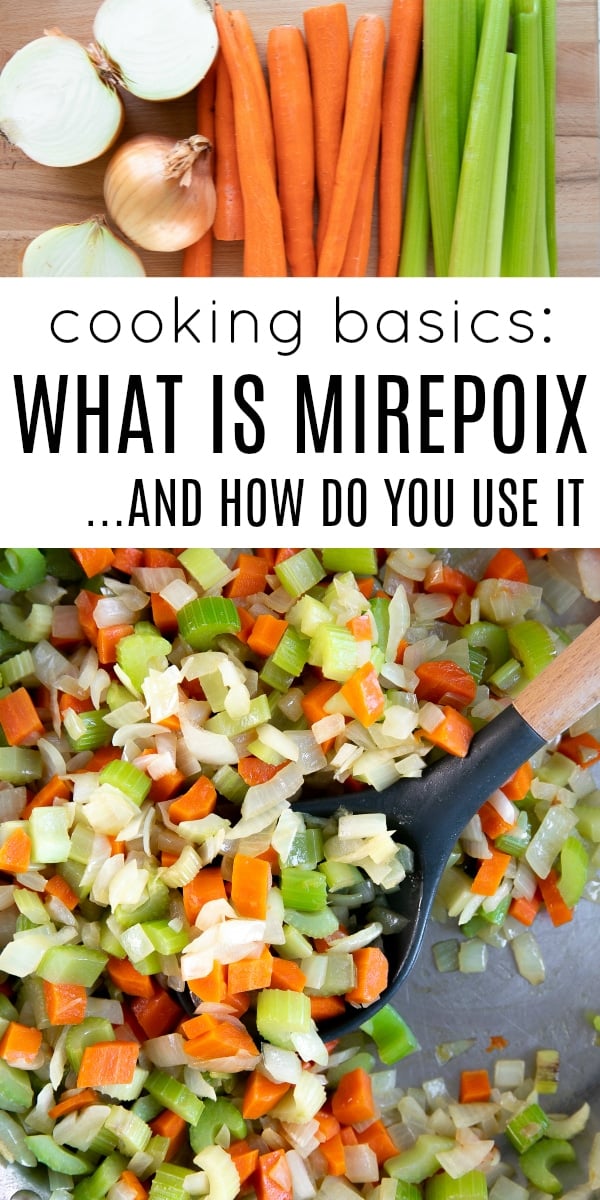

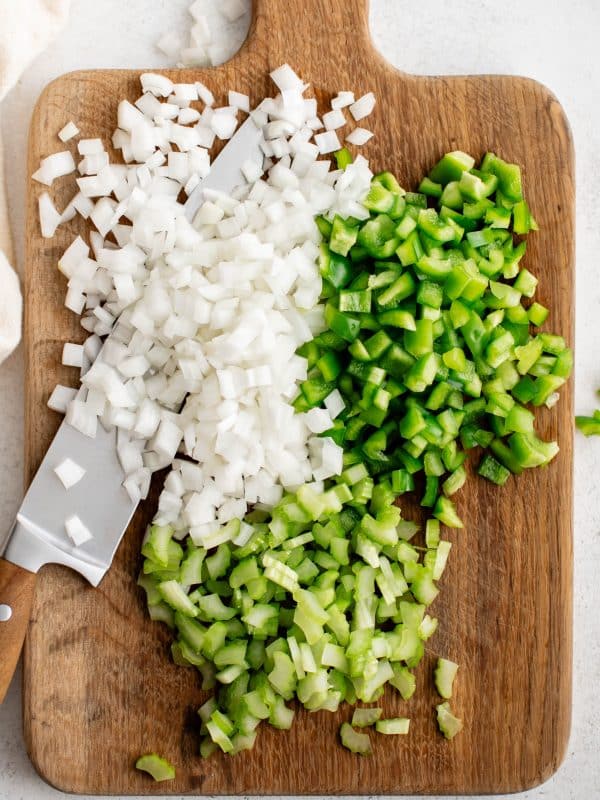
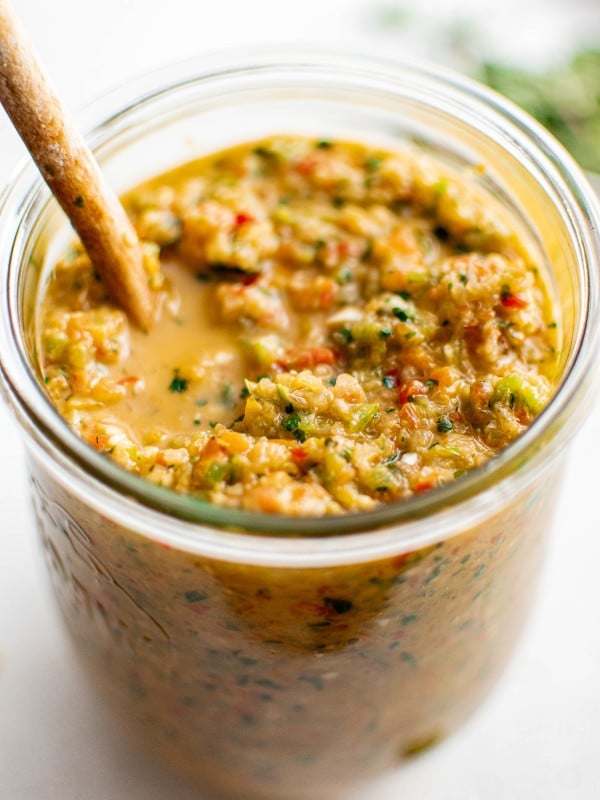

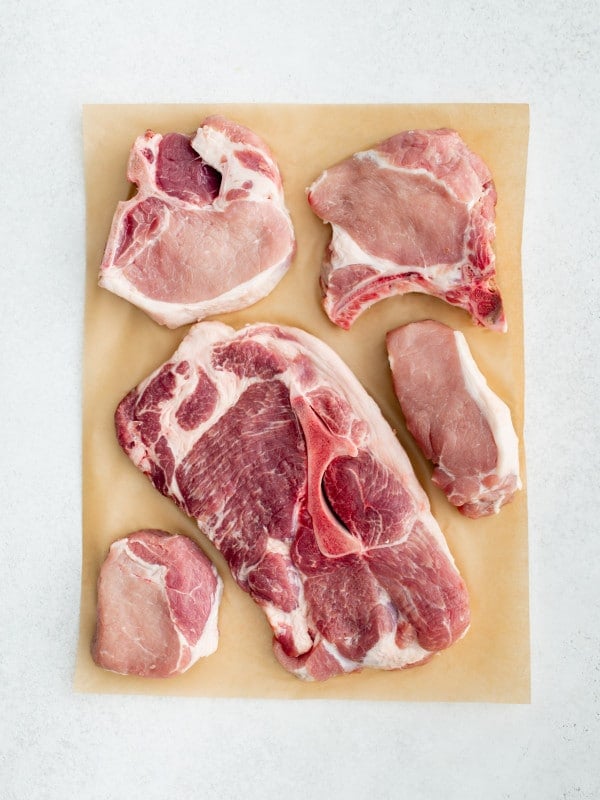








Really enjoyed this recipe! We topped it with Parmesan cheese and it was delicious! We both had seconds!
Thanks, Abby 🙂
I tried the holy trinity combination with Mirepoix in Goulash and in Tuna Melt. Astonishing feed backs I received from all who tasted it. I added to each two tablespoons of low sodium soy sauce for Umami.
Those do sound like fun combinations, Rodolph 🙂
Don’t understand why you want to sweeten vegetables. Their charm is their lack of sweetness.
3 main reasons:
Flavor Release: Sweating gently cooks the vegetables in a bit of fat, like oil or butter, over low to medium heat. This process helps release the moisture from the vegetables without browning them, allowing their natural sugars to emerge subtly. The gentle heat encourages the vegetables to soften and release their flavors gradually, which melds and deepens the overall taste profile of the dish.
Texture Softening: By sweating the vegetables, you soften them, which makes them a more uniform and subtle part of the overall dish. This soft texture ensures that the vegetables contribute to the dish’s body without overpowering it with too much crunch or raw flavor.
Aroma Development: As the vegetables sweat, they release aromas that are key to layering flavors. These aromas set the stage for adding other ingredients, creating a complex bouquet that forms the backbone of the dish’s flavor.
I’ve finally found a way to cook curry that I enjoy and enjoy again when reheating what was left the first time. Start with a mirepoix but with half of a bell pepper added, cut small in the same way. add 4 teaspoons of curry powder when the mirepoix is almost cooked. (Be careful not to overdo this as you’re making just an ordinary frying pan full of food.) While you were making the mirepoix you had chopped 2 medium-large potatoes into small segments and put them in the microwave for four minutes at full heat. Add a mug of chicken broth to the mirepoix and also the half-cooked potato pieces. Add a tablespoon of vinegar and then a mug full of uncooked rice. Stir the rice in and add more boiled water for the rice to absorb. Keep it cooking at low setting with the cover on the frying pan. Add water as necessary to stop the curry from sticking to the pan, stir. The basmati rice will absorb that water quite quickly and you’ll be amazed how soon you have a curry to serve. Add sliced banana and sweet chutney (Mrs Ball’s if you can get it.)
Along with the curry powder, you might add some coriander powder and turmeric for taste. It depends on what you like. I intend to add garlic too perhaps although it’s near perfection as is.
I just made a home chef Alfredo meal with mirepoix broth concentrate. It was thick and brown. Your recipe makes it appear to be a thinner broth. What’s the difference?
Mirepoix is a mixture of chopped celery, onions, and carrots that is often used as a flavor base in many types of cooking, especially in French cuisine. It’s commonly sautéed in butter or oil as the beginning of a soup, stew, or sauce.
Mirepoix broth concentrate would be a reduction or concentrated form of a broth that has been made using these ingredients. The vegetables would be simmered along with herbs and sometimes meat or bones in water or stock until the flavors are melded together. Then, the broth could be reduced down to a concentrated form to intensify the flavors. This concentrate can be used as a flavorful base or addition to various dishes, providing a rich and complex flavor profile. Depending on the specific ingredients and the degree to which it’s been reduced, it may have a thicker consistency and darker color than a traditional broth.
I’m a trained linguist and Latin referes to all the languages on the Latin linguistic tree branch, which includes Spanish, Portuguese, French, Italian, Romanian, latin, Provencal, et al.
“Refers” sorry, my settings were on French.
Hispanic refers to Hispanola only (Portugal and Spain) and thereby omits other Latin speaking countries. So the term Hispanic can only refer to those two countries. Social misuse, especially in the states, causes confusion and assumptions about the term and thought some clarification was in order.
No, Todd. Just no. This is a cooking blog, not professional culinary school and the discrepancies in precise origins and geographical groupings you’re pointing out as a trained linguist make absolutely no difference here. Any resulting ‘confusion’ caused to amateur cooks browsing Google for recipes can be rectified when said cooks decide to become experts in the cuisine of those regions. Imparting your knowledge HERE, while truly important and very relevant in different settings for other reasons, just comes off as pretentious and ill-mannered.
YES. Thank you Tricia.
Well said!!!
Todd, I’m with Tricia here—but also…seriously? “Hispanic” refers not to Spain and Portugal (those would be the two nations of the Iberian peninsula), but to all Spanish-speaking countries—which include all such countries in the Americas and Spain, but neither Brazil nor Portugal. “Latin America” includes Brazil, but excludes Spain. “Hispaniola” is the island that houses Haiti and the Dominican Republic. Jessica’s description was just fine…and the mirepoix is yummy, regardless of your linguistic background.
When I started reading this, I thought “hey, that sounds like ‘the holy trinity'” (I’m from Louisiana). I kept reading and there it was! Thank you for the explanation of the different versions. I learned a lot!
Thanks for the feedback Summer 🙂
I haven’t tried the mirepoix recipes yet but I love this sight!!
I just made sausage and lentils and I technically used a soffritto, it added such a complexity to the simple dish!
Thanks for the information it was great fun reading and learning about all of the other varieties and a little of the history
Hi! Great article. One thing, though, you used Latin as different from the Italian and the French who are Latins too. Actually, the Italians are the most Latin of all Latins. If you meant in the Spanish-speaking countries, the term is Hispanics (short for Hispanophones). Keep in mind that Latin IS NOT synomim of Hispanic. Best and thanks for great article
No such word as synomim. Just an observation.
but there IS such a word as “snark.” you should lose yours. just an observation.
Please refer to Tricias reply to Tod.
Removing the mirepoix is useful in the same way as straining a sauce or soup stock is. You get a fine result without chunks or small pieces. But after only 10-12 minutes in fat at low temp, there is STILL a lot of nutritional value in the vegetables. If you put a LOT of fat and let it cook low for about 2 hours, THEN there will be almost nothing left. Fat is a great flavour vessel, after a while, it will have absorbed everything that is soluble in fat from the vegetables, but there might still be other components that are only soluble (able to dissolve) in water and/or alcool. Its your choice.
What I do usually is either only cook them enough to give the fats their flavour profile, and try to integrate the mirepoix in the recipe instead of wasting it.. Either whole or pureed. You can add it at the end in your boiling-hot soups, a bit before serving time so them heat up, like noodles in a minestrone or hard root stuff that tends to mush up when overcooked, like potatoes…
Hi, I thought the vegetables were removed after extracting their essence, but I can’t see any mention of that here…
Hi Innes,
In specific recipes, yes, the vegetables are removed. But far more recipes leave all the vegetables in 🙂
How is the mirepoix removed? If removed, how is it integrated into the dish? This removal piece is a little confusing.
Great question, Tamara!
Removing the vegetables is only called for in specific recipes. Unless you are cooking a recipe that calls for removing, which would have the removing instructions already per the specifics of that said recipe, I would simply ignore the removing process 😀